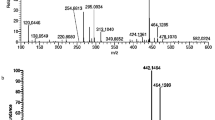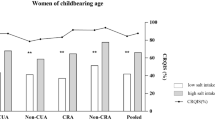Abstract
Objective:
Sustained iodine deficiency control requires sustainable mechanisms for iodine supplementation. We aim to describe the status of salt iodation machines, salt producers’ experiences and quality of salt produced in Tanzania.
Methods:
Qualitative and quantitative data was collected from the factory sites, observations were made on the status of UNICEF-supplied assisted-iodation machines and convenience samples of salt from 85 salt production facilities were analysed for iodine content.
Results:
A total of 140 salt works visited had received 72 salt iodation machines in 1990s, but had largely abandoned them due to high running and maintenance costs. Locally devised simple technology was instead being used to iodate salt. High variability of salt iodine content was found and only 7% of samples fell within the required iodation range.
Conclusion:
Although iodine content at factory level is highly variable, overall iodine supply to the population has been deemed largely sufficient. The need for perpetual iodine fortification requires reassessment of salt iodation techniques and production-monitoring systems to ensure sustainability. The emerging local technologies need evaluation as alternative approaches for sustaining universal salt iodation in low-income countries with many small-scale salt producers.
This is a preview of subscription content, access via your institution
Access options
Subscribe to this journal
Receive 12 print issues and online access
$259.00 per year
only $21.58 per issue
Buy this article
- Purchase on Springer Link
- Instant access to full article PDF
Prices may be subject to local taxes which are calculated during checkout
Similar content being viewed by others
References
Assey VD, Greiner T, Mzee RK, Abuu H, Mgoba C, Kimboka S et al. (2006b). Iodine deficiency persists in the Zanzibar Islands of Tanzania. Food Nutr Bull 27, 292–299.
Assey VD, Mgoba C, Mlingi N, Sanga A, Ndossi GD, Greiner T et al. (2006a). Remaining challenges in Tanzania's efforts to eliminate iodine deficiency. Public Health Nutr 9, 1–8.
Delange F, deBenoist B, Pretell E, Dunn JT (2001). Iodine deficiency in the world: where do we stand at the turn of the century? Thyroid 11, 437–447.
Diosady L, Mannar V, Stone TG (1997). Stability of iodine in iodized salt used for correction of iodine-deficiency disorders. Food Nutr Bull 18, 388–396.
Kavishe F, Mushi S (1993) Nutrition Relevant Actions in Tanzania. UN ACC/SCN country case studies for International Union of Nutrition Sciences, Adelaide: United Nations, UN ACC/SCN country case studies. TFNC Monograph No 1, pp 153–179.
Lantum D, Egbuta J, Mutamba J, Ntambue T (2004). Reports from the regions and countries by ICCIDD coordinators – Africa region. In: Hetzel B, Delange F, Dunn JT, Mannar V, Pandav CS (eds). Towards the Global Elimination of Brain Damage due to Iodine Deficiency pp 295–340. Oxford University Press: New Delhi.
MI (1995). Workshop on Salt Iodization for Small Producers of Salt from West Africa Micronutrient Initiative. IDRC: Ottawa, Canada.
MI (2001). Current Progress and Trends in the Control of Vitamin A, Iodine and Iron Deficiencies Micronutrient Initiative. IDRC: Ottawa, Canada.
National Bureau of Statistics [Tanzania] Macro International Inc (2000). Tanzania Reproductive and Child Health Surveys 1999. Tanzania Bureau of Statistics and Macro International: Calverton, MD, USA.
National Bureau of Statistics [Tanzania] and ORC Macro (2005). Tanzania Demographic Health Survey 2004–2005. Dar es Salaam: Tanzania.
Sundquist J, Wijetunga M, Assey V, Gebre-Medhin M, Peterson S (1998). Salt iodation and risk of neonatal brain damage. Lancet 352, 34–35 (Letter).
UNICEF (1994). Small Salt Producers and Universal Salt Iodation. UNICEF Nutrition Section: New York.
UNICEF/WHO (1993) Progress report to the Joint Committee on Health Policy, 29th Session, Geneva.
United Republic of Tanzania (1994) Salt Acts, The Mining Act 1979: The Mining (Salt Production and Iodation) Regulations 1994 and The Food (Control of Quality) Act 1978. Regulations made under section 161, 2 16 (1) and (2). The Food (Iodated salt) regulation 1992.
WHO/UNICEF/ICCIDD (1996). Recommended Iodine Levels in Salt and Guidelines for Monitoring Adequacy and Effectiveness. World Health Organisation: Geneva WHO document WHO/NUT/96.13.
WHO/UNICEF/ICCIDD Consultation Report (1997) Review of Findings from Seven Country Study in Africa on Levels of Salt Iodization in Relation to Iodine Deficiency Disorders Including Iodine Induced Hyperthyroidism, 8–9 July 1996, Geneva, WHO NUT 97.5.
WHO/UNICEF/ICCIDD (2001). Assessment of Iodine Deficiency Disorders and Monitoring their Elimination. A Guide for Programme Managers. World Health Organisation: Geneva. WHO document WHO/NHD/01.1, pp 1–107.
Acknowledgements
We thank the Tanzania Food and Nutrition Centre and salt producers for their contributions and making this study possible. Special thanks to Michael Maganga who carried the analysis of salt samples. Financial support was provided by The Government of Tanzania, International Program for Chemical Sciences (IPICS) and UNICEF.
Author information
Authors and Affiliations
Corresponding author
Rights and permissions
About this article
Cite this article
Assey, V., Peterson, S. & Greiner, T. Sustainable universal salt iodization in low-income countries – time to re-think strategies?. Eur J Clin Nutr 62, 292–294 (2008). https://doi.org/10.1038/sj.ejcn.1602737
Received:
Revised:
Accepted:
Published:
Issue Date:
DOI: https://doi.org/10.1038/sj.ejcn.1602737
Keywords
This article is cited by
-
Socio-economic and spatial correlates of subclinical iodine deficiency among pregnant women age 15–49 years in Tanzania
BMC Nutrition (2017)
-
Improved salt iodation methods for small-scale salt producers in low-resource settings in Tanzania
BMC Public Health (2009)
-
Tanzania national survey on iodine deficiency: impact after twelve years of salt iodation
BMC Public Health (2009)



